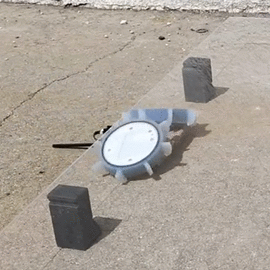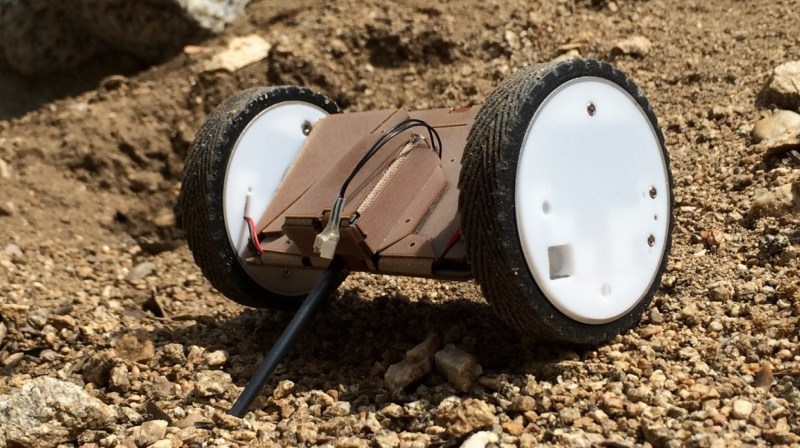Is there room on Mars and Europa for cute robots? [NASA] — collaborating with [UC Berkley] and [Distant Focus Corporation] — have the answer: PUFFER, a robot inspired by origami.
 PUFFER — which stands for Pop-Up Flat-Folding Explorer Robot — is able to sense objects and adjust its profile accordingly by ‘folding’ itself into a smaller size to fit itself into nooks and crannies. It was designed so multiple PUFFERs could reside inside a larger craft and then be deployed to scout otherwise inaccessible terrain. Caves, lava tubes and shaded rock overhangs that could shelter organic material are prime candidates for exploration. The groups of PUFFERs will send the collected info back to the mother ship to be relayed to mother Earth.
PUFFER — which stands for Pop-Up Flat-Folding Explorer Robot — is able to sense objects and adjust its profile accordingly by ‘folding’ itself into a smaller size to fit itself into nooks and crannies. It was designed so multiple PUFFERs could reside inside a larger craft and then be deployed to scout otherwise inaccessible terrain. Caves, lava tubes and shaded rock overhangs that could shelter organic material are prime candidates for exploration. The groups of PUFFERs will send the collected info back to the mother ship to be relayed to mother Earth.
We’ve embedded the video of the bot folding it’s wheels down to pass a low-bridge. You can get a view of the wider scope of functionality for the collection of demos on the project page.
Its low cost, weight, and small size would make an ideal addition to expand mission capacity with complimentary science instruments. Plus, it can withstand a few bumps, climb up steep inclines, even navigate slippery or snowy surfaces, all of which suggests additional these probes will be an invaluable asset for any future exploration missions.
For more space-goodness, check out that time we toured the Jet-Propulsion Laboratory, or try your hand at solving one of space exploration’s frustrating problems.
[Tip provided by Itay, via Gizmodo]
















A robot that can do the limbo.
In limbo mode it looks like a horseshoe crab…
https://youtu.be/k1H0dwbwxtA
My project can record upskirt videos, but the servos are slow.
Humans!
;-)
We (yetis — fluff on 2 legs) wouldn’t have much fun from adding a camera on such a bot…
:-P
I dare the puffer to limbo under a bed landmined with stinky socks!
omg that’s cool.
I don’t really have anything interesting to add.
Which planet is it expecting to find randomly strewn pieces of float glass on?
On our planet.
Oh, so the unwritten story here is that it’s a physical pentester, designed to scoot under chainlink fences, and relay/survey radio and E-M emissions to distant hacker….
This is entirely NOT USEFUL.
When exploring unknown terrain, there is a very small chance that you’ll encounter an obstacle that the robot can take in the lowered position, but not in the upright position. If you go to a planet with giants and they live in houses where the gap between the doors and the floor are this high… yes. Otherwise, just build a bunch of robots, some bigger, some smaller, get the smaller ones to explore the tight spots.
I think that the idea here is that one robot can do the job of both a large robot and a small one. Sending stuff to another planet is expensive, so it is usually better to send one robot than two even if the two robots work better in their designed niches.
This. Looking for survivors in the “pile” after a train derailment or building collapse.
I guess what I’ve never understood is why they don’t just design it in the lowered position and keep it there. Why does it need to go back and forth between the positions? I can’t imagine speed of travel is a critical parameter for these things.